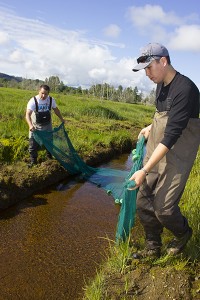U.S. Chamber of Commerce’s Executive Vice President for Government Affairs Bruce Josten sent a letter to members of the House Committee on Natural Resources in support of H.R. 1548, the “Native American Energy Act.”
- H.R. 1548 would be an important step in furthering efforts by Congress to encourage economic development throughout Indian Country.
- It would do so by fostering tribal sovereignty and eliminating cumbersome Federal bureaucratic processes, which we believe to be a sure path to economic growth.
- Furthermore, we believe the bill would make further headway towards American energy independence while it would also provide much needed employment to hard-stricken regions of the country.
- The U.S. Chamber has recently established the Native American Enterprise Initiative (NAEI) in recognition of the revolution in entrepreneurship occurring amongst the nearly three million people of American Indian and Alaskan Native heritage. Drawing on the Chamber’s record of business advocacy, the NAEI seeks to remove legislative and regulatory roadblocks to their economic success, which H.R. 1548 would do.


